Abstract
A plate diffusion method was used to assess the tolerance of 28 mesophilic and 4 thermophilic species of streptomycetes to eight metals. This method allowed a qualitative screen of the effects of the metals on growth, on sporulation, and in some cases, on secondary metabolite production. Tolerant and sensitive species were identified, some of which exhibited the same response (i.e., tolerance or sensitivity) to a number of metals. Experiments in liquid culture were used to quantify the precise concentration ranges of the metals at which the most tolerant or sensitive species could grow. Distribution profiles of the sensitivities of all species examined toward different metals revealed that the order of toxicity was Hg > Cd > Co > Zn > Ni > Cu > Cr > Mn.
Full text
PDF
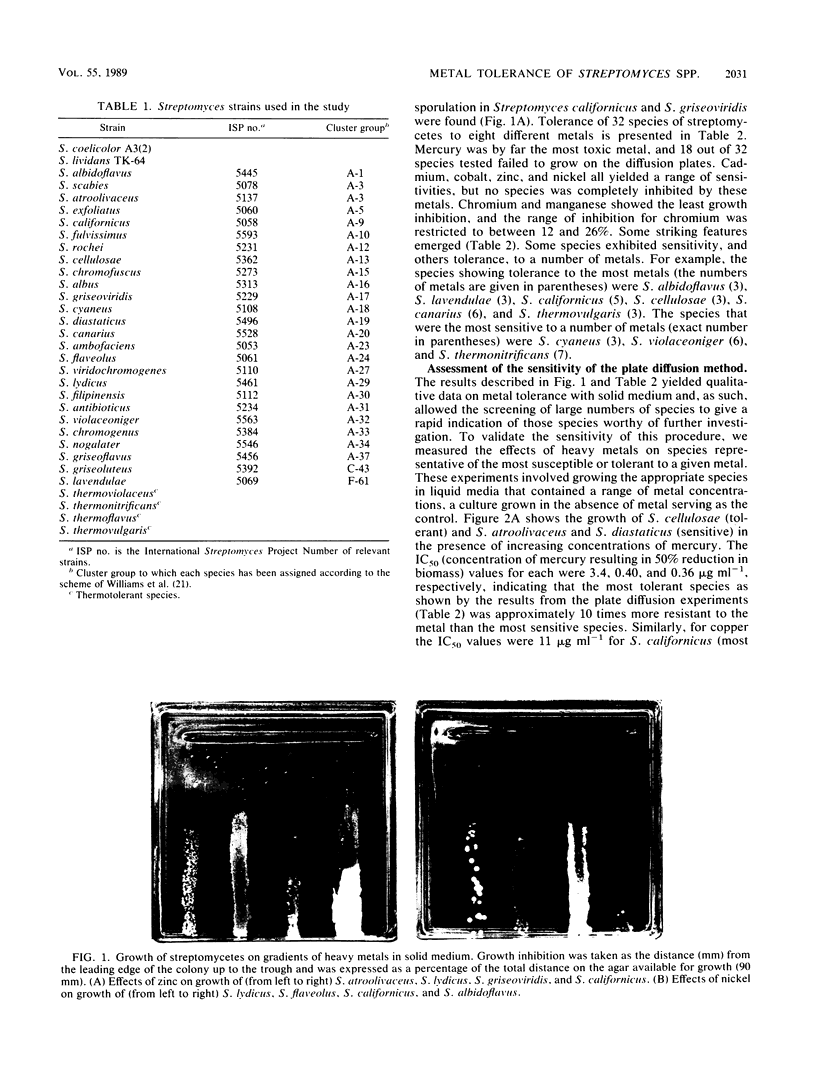
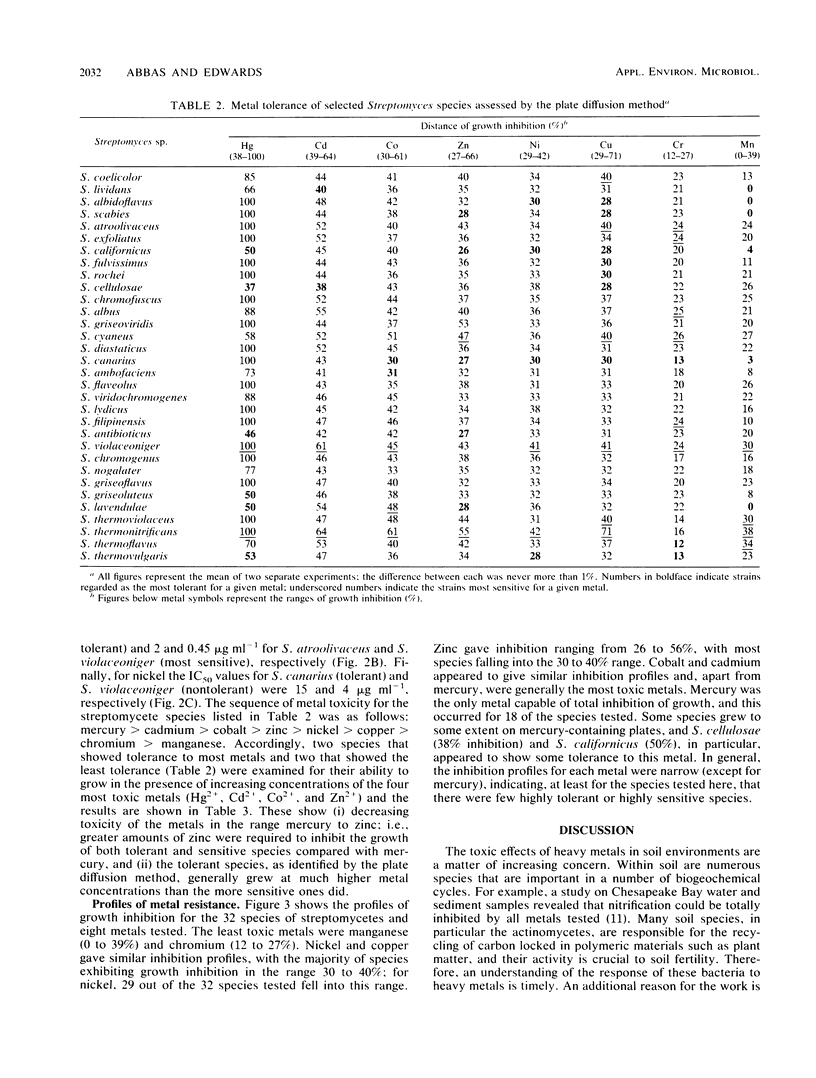
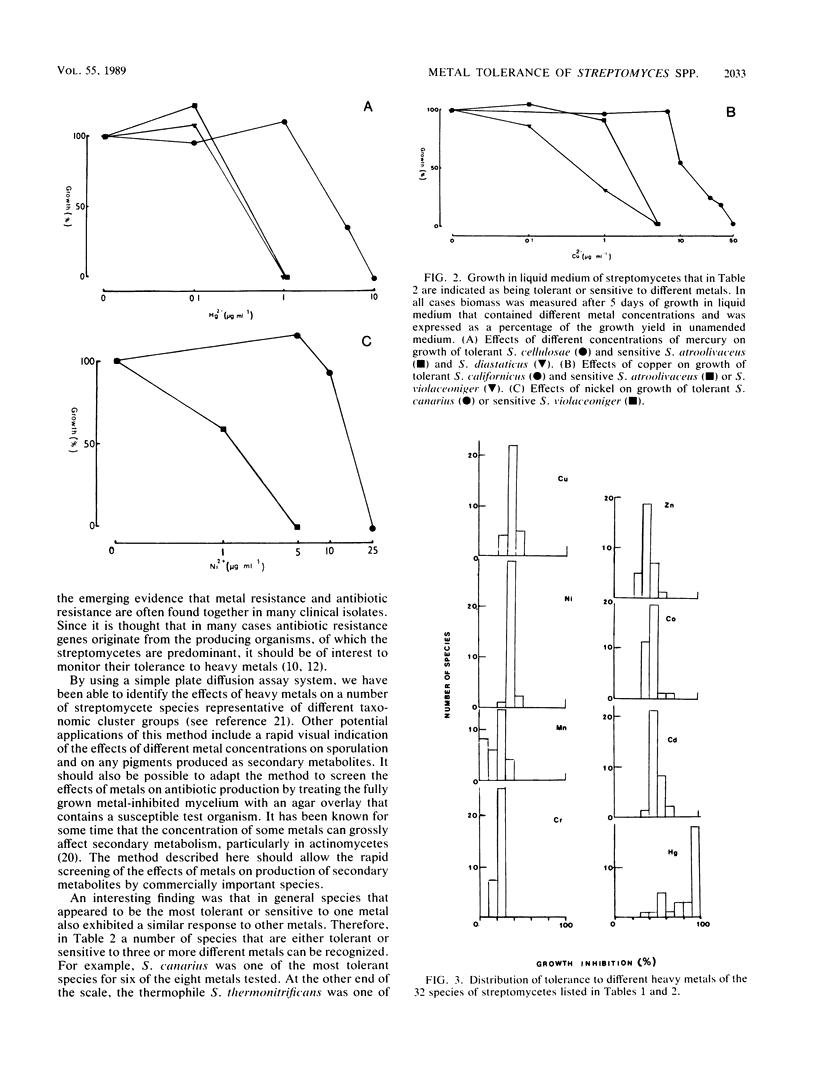
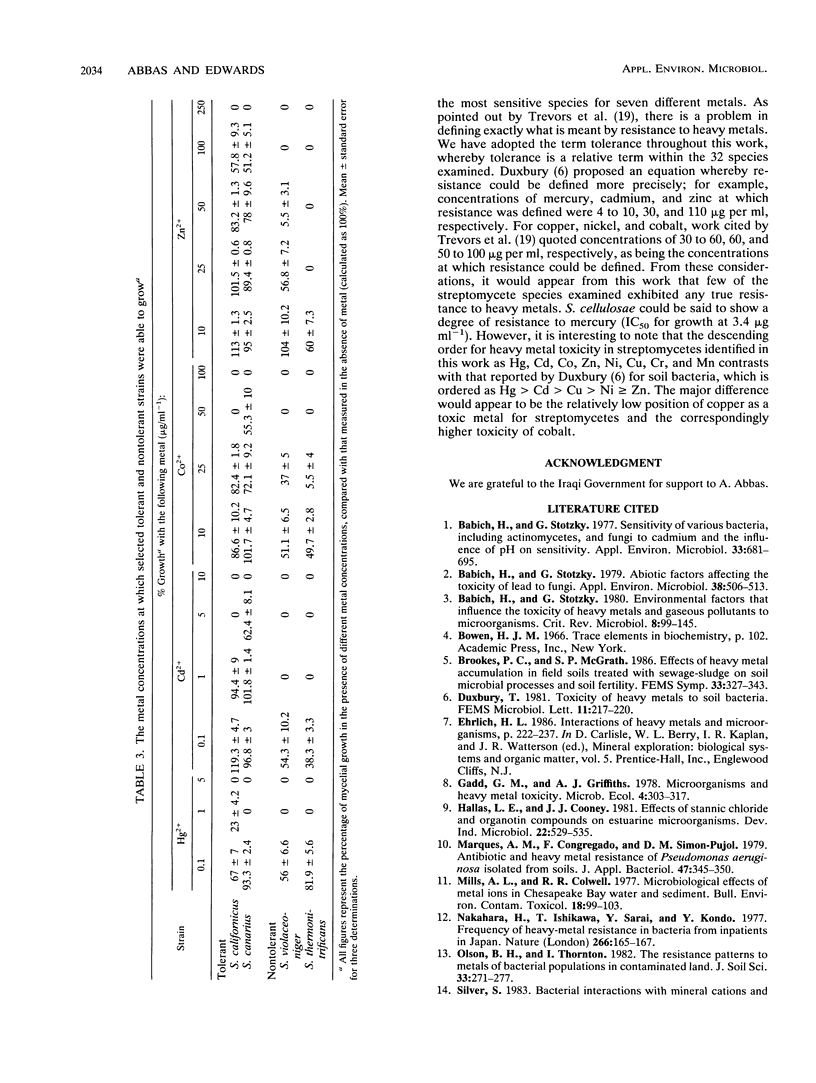
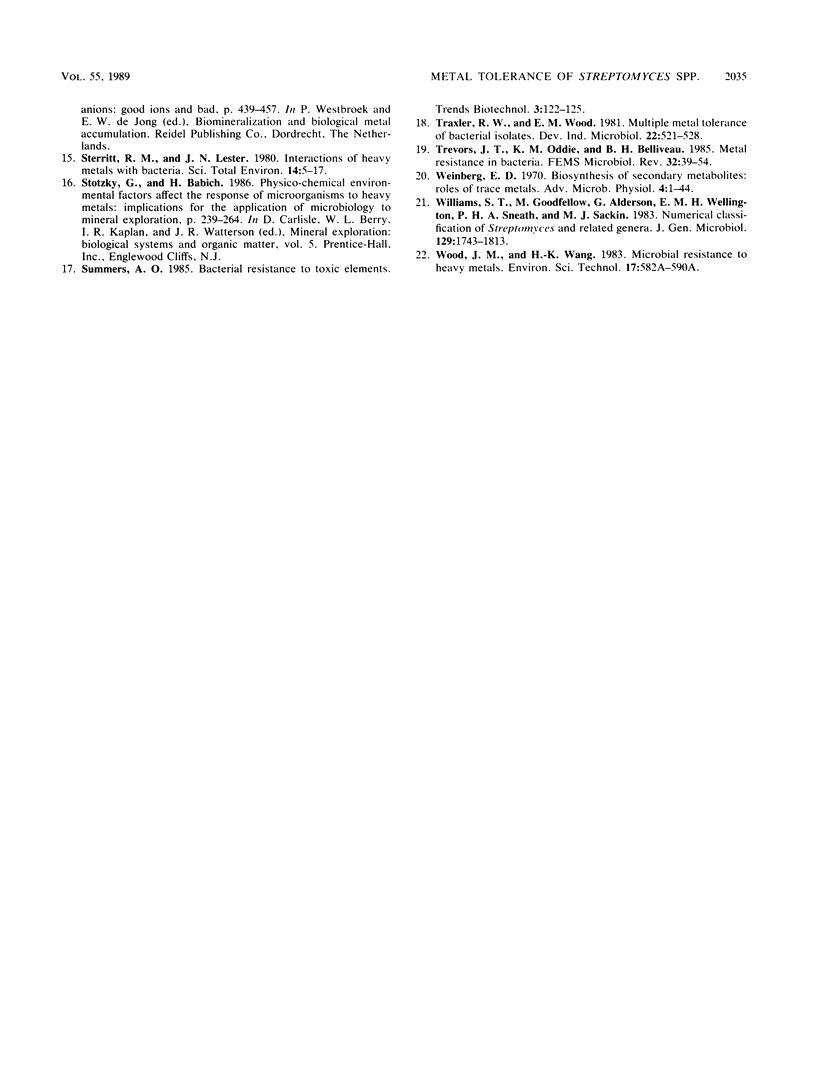
Images in this article
Selected References
These references are in PubMed. This may not be the complete list of references from this article.
- Babich H., Stotzky G. Abiotic factors affecting the toxicity of lead to fungi. Appl Environ Microbiol. 1979 Sep;38(3):506–513. doi: 10.1128/aem.38.3.506-513.1979. [DOI] [PMC free article] [PubMed] [Google Scholar]
- Babich H., Stotzky G. Environmental factors that influence the toxicity of heavy metal and gaseous pollutants to microorganisms. Crit Rev Microbiol. 1980;8(2):99–145. doi: 10.3109/10408418009081123. [DOI] [PubMed] [Google Scholar]
- Babich H., Stotzky G. Sensitivity of Various Bacteria, Including Actinomycetes, and Fungi to Cadmium and the Influence of pH on Sensitivity. Appl Environ Microbiol. 1977 Mar;33(3):681–695. doi: 10.1128/aem.33.3.681-695.1977. [DOI] [PMC free article] [PubMed] [Google Scholar]
- Marques A. M., Congregado F., Simon-Pujol D. M. Antibiotic and heavy metal resistance of Pseudomonas aeruginosa isolated from soils. J Appl Bacteriol. 1979 Oct;47(2):347–350. doi: 10.1111/j.1365-2672.1979.tb01765.x. [DOI] [PubMed] [Google Scholar]
- Mills A. L., Colwell R. R. Microbiological effects of metal ions in Chesapeake Bay water and sediment. Bull Environ Contam Toxicol. 1977 Jul;18(1):99–103. doi: 10.1007/BF01686313. [DOI] [PubMed] [Google Scholar]
- Nakahara H., Ishikawa T., Sarai Y., Kondo I. Frequency of heavy-metal resistance in bacteria from inpatients in Japan. Nature. 1977 Mar 10;266(5598):165–167. doi: 10.1038/266165a0. [DOI] [PubMed] [Google Scholar]
- Sterritt R. M., Lester J. N. Interactions of heavy metals with bacteria. Sci Total Environ. 1980 Jan;14(1):5–17. doi: 10.1016/0048-9697(80)90122-9. [DOI] [PubMed] [Google Scholar]
- Williams S. T., Goodfellow M., Alderson G., Wellington E. M., Sneath P. H., Sackin M. J. Numerical classification of Streptomyces and related genera. J Gen Microbiol. 1983 Jun;129(6):1743–1813. doi: 10.1099/00221287-129-6-1743. [DOI] [PubMed] [Google Scholar]



